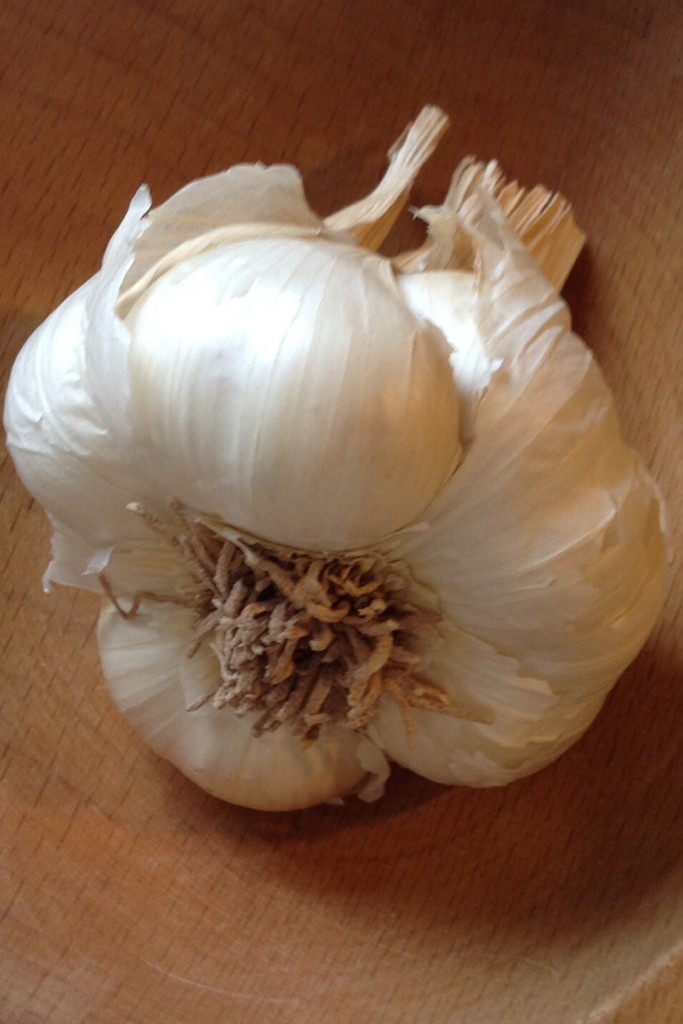That is one beautiful, robust clove of garlic pictured above. It came from a small local market where I do a lot of my shopping. It stored well down to the last piece, no shriveling or mold spots, and cooked up beautifully with all the rich umami flavor I expect from an honest clove.
The garlic was imported. The sign above said “IMPORTED GARLIC” but no information on the country of origin was included.
So I started looking around for someone to ask. The store is run by a bunch of guys who love the business I give them but do not always have time or inclination for all my questions.
Now I am not easy. I want to know everything about everything. That’s me. A real pain in the ass. So when I shop for food I am always attentive to managing a constant tension between my desire to know and someone else’s desire not to be bothered.
And my observation over the years is that guys who work in the food business usually do not appreciate curious ladies with questions, unless they work at Whole Foods. But I was not shopping Whole Foods that day.
My first try was the young man attending to scallions. His English was at best somewhat broken but he understood my question, just smiled when I asked if he knew where the garlic came from and he just said ” Nooooo … ”
One of the managers would probably would have known was elbow deep in piles of delivery papers so I decided not to interrupt.
Then I saw one of the principles, usually tolerant of my insatiable curiosity. As I approached he took a quick turn from my path into the refrigerator storage room. So I gave up, paid for my purchases, and left the store garlic in hand.
In the parking lot behind the store is a holding shed for produce to wait before it goes into the store for sale. I was parked near the holding shed so I put my bags in the car, went back to door to the shed, and looked in.
No one there. But I could see lots of boxes. I know the country of origin always appears on shipping crates or boxes. So I went in and started poking around and I found it!
Printed clearly on one of the boxes were these two words: GARLIC Argentina. No other indicators like organic or fair trade or nonGMO, but I had my country of origin.
But I got to thinking on the drive home, is it my right to know? Where do you draw the line between frivolous curiosity and legitimate need? Sometimes it is critically important. If there is a recall for example, where that cantaloupe or peach came from becomes critically important. Clearly a legitimate need.
And then there is that very long list of other nice to know things like fair trade or nonGMO or organic or heirloom. These labels are good marketing tools, but do they fall into the category of legitimate need?
Thinking through the issue on the drive home, I conceded that it’s not really my right to know unless it is a safety issue.
Developing a good relationship with your customers has encourage many vendors to make it their business to answer questions. That is why I have such good relations with many of the Whole Foods staff. But this particular store I shop at does not have that kind of business. It’s a family affair and run by people who have been in the produce for two generations. Twice a week they go to the Hunts Point distribution center and refresh the stock. I shop there because they are expert at buying produce. And for perks, they bring in blood oranges from Sicily in the winter and green figs from California in the late summer.
Besides there is more than one way to discover a country of origin. I had my answer and came home with a great garlic. So I have decided to cut them slack on this country of origin issue.

